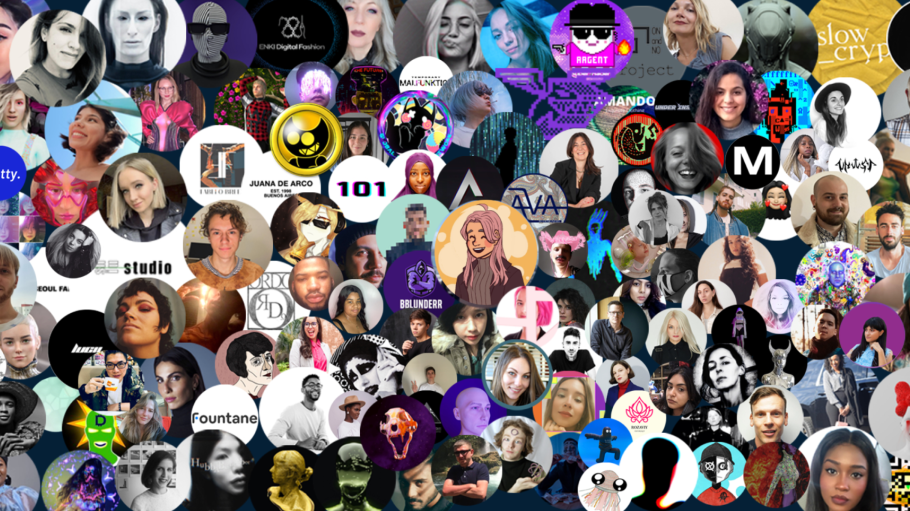When fashion has fully entered the metaverse, the upsides for sustainability will be many, though new questions around ethics will no doubt come into play.
Instead of supply chains, there are blockchains. Frenzied fashion weeks could increasingly give way to virtual fashion shows. Business travel for trade shows and summits could become less necessary, saving on flights and their costly emissions. Further, NFTs can validate a physical garment’s life cycle (hello circularity) and bring value in the form of climate education, charitable giveback schemes (like one from Los Angeles-based label Polite Worldwide). And there’s the all-important cut back on physical production.
Despite the potential, there’s no ready-made playbook yet as to how brands can navigate the metaverse sustainably and what it means in real life. There are, however, some general questions to consider in being more ethical, sustainable and transparent online.
The Metaverse and Circularity
Circularity expert Rachel Kibbe, founder of Circular Services Group and inventory solution start-up Kept Sku, believes fashion is — for the first time — embracing the future with all the metaverse talk, which could pull existing sustainability progress along with it.
Kibbe summed up the potential as “a more singular and source of truth for that garment” if physical garments beget digital value and digital value begets physical actions like reuse or resale. And, of course, a lower footprint if a brand goes direct to the metaverse, although the metrics of that are yet to be known.
She waved a civic success story in front as a comparison to how value is perceived.
“Bottle returns for plastic bottles have been extremely successful. The states that have bottle laws have been the most successful recycling programs ever.” (A November press release from New York Public Interest Research Group called the state’s bottle bill one of the most “successful” environmental programs, citing a 70 percent reduction in curbside litter.) Kibbe drew parallels: “If you think about that in terms of the metaverse, the metaverse is built on cryptocurrency, which is just another way of denominating value, so how can I give people value for taking the next rightful action with an item and have that traceable?”
[…]
The Metaverse and Tech Power ‘Bro’-Kers
It’s a permission-less space, but as WWD’s metaverse explainer shows, there’s a picture forming of both possibilities and dark overlords (or today’s tech power bro-kers) controlling too much of those possibilities. But the other side of it — the sustainability side — is a dematerialized reality where indie designers can truly flourish on open-sourced platforms and consumers aren’t just consumers but creators.
“Become a Web3 Fashion Designer and Launch Your Own Label” is emblazoned in sans-serif font on Digitalax’s website, a company building its version of a metaverse-enabled digital fashion economy and apparently equipped with all the tools to make it happen.
A browse through Digitalax’s website reveals physical fashion (Digitalax-branded merch like hoodies for $80), digital fashion (user-created products like bracelets, avatars and dresses ranging from $40 to $11,500) and a core NFT marketplace.
“They can now have the self-sovereign tools to coordinate and self-capitalize to build a sustainable brand, support sustainable suppliers and make environmentally friendly consumer choices,” Emma-Jane MacKinnon-Lee, founder of Digitalax, told WWD. “They can also align incentives with their buyers and build strong communities through a [decentralized autonomous organization], so that network effects empower the broader movement.”
“Tools” include the community support, guides and built frameworks, or what Digitalax calls fractional garment ownership. This method funnels components like a digital pattern, material or texture and open-sources them into libraries for anyone that has a Digitalax account (and a digital wallet to interact and mint NFTs). The original designer benefits from fractional garment ownership, earning royalties upon use.
This means sustainable fashion no longer has to be “undercapitalized” and everyone who believes in sustainability doesn’t have to be a “saintly altruist,” according to MacKinnon-Lee, meaning self-sacrificing profit for good. “You can do good and do well at the same time.” MacKinnon-Lee dropped out of the University of Sydney two years ago on that premise, swapping an aerospace engineering degree for crypto’s boundless potential.
Read the full article on WWD

